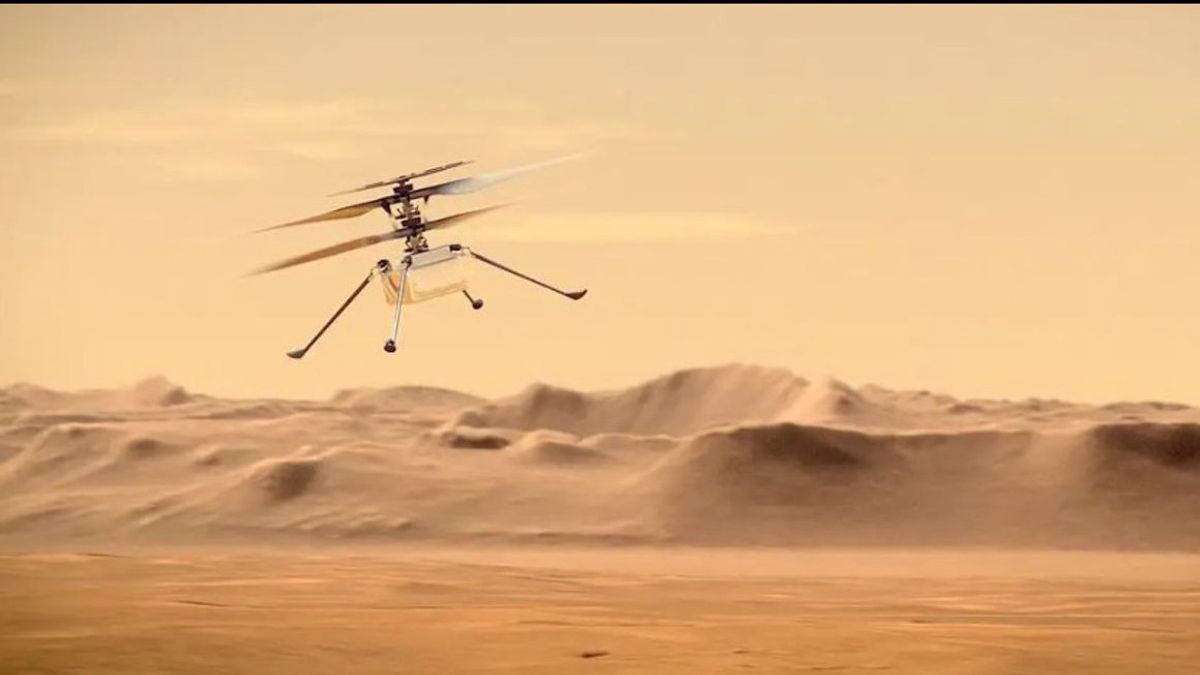JAKARTA - NASA's AI helicopter, Ingenuity, successfully made its third flight on Mars. For the first time, this small plane flew a considerable distance.
"Today's flight is what we are planning to do, but it is truly extraordinary. With this flight, we demonstrate a critical capability that will enable additional dimensions of air for future Mars missions," said program executive for NASA's Ingenuity, Dave Lavery.
To quote The Verge, Ingenuity's test flight took off from the surface of Mars and was successfully airborne at an altitude of 5 meters. The helicopter then flies within a radius of 50 meters at a speed of 2 meters per second, or the equivalent of 4.5 mph.
🚁 With 2 flights down & up to 3 to go - our Ingenuity #MarsHelicopter is soaring to new heights! 🎙️ Find out how @NASAJPL engineers communicate with the helicopter in this new episode of our #GravityAssist podcast with Chief Scientist Jim Green: https: //t.co/beguKQFWtz pic.twitter.com/anaCSDqZ7p
- NASA (@NASA) April 24, 2021
NASA says this flight is the fastest and farthest Ingenuity has made so far. One of the reasons helicopters haven't flown far before, even when conducting tests on Earth, is because the tests have to be carried out in a vacuum to simulate the low density of air on Mars.
The vacuum is only a limited size, so there isn't enough room for the helicopter to maneuver, there is only enough room to move about half a meter in any direction. So researchers should remain hopeful that their calculations will yield results if helicopters are able to move in the Martian atmosphere.
It seemed that all their preparations had paid off, because the helicopter was doing so well. Despite the potential problems caused by the Martian environment, such as dust and delays in communications on Earth, Ingenuity is still running well.
"This is the first time we've seen the algorithm for cameras running remotely. You can't do this inside a test room," said MiMi Aung, helicopter project manager at NASA JPL.
As previously reported, Ingenuity's second flight was successfully airborne for 52 seconds and reached an altitude of 5 meters above the Jezero Mars Crater. Ingenuity itself lands on the Red Planet on February 18th.
Ingenuity's mission to prove the small plane can fly on Mars. Please note, flight on Mars is very challenging because of the differences between the planet and Earth. The main difference is that the Martian atmosphere is only less than 1 percent of Earth's thickness.
The English, Chinese, Japanese, Arabic, and French versions are automatically generated by the AI. So there may still be inaccuracies in translating, please always see Indonesian as our main language. (system supported by DigitalSiber.id)












